The Children's Unit at Camarillo State Mental Hospital has moved around a lot in the decades of Camarillo's existence. The CU used to be up where the student housing and a park now stand. There are also areas in the Receiving and Admissions building with children's 4 square courts painted on the playground and a child's mural on the inside of a wall. The is old playground equipment up by the main administration building as well, and many murals are in that building. Children came to Camarillo for many different reasons. This page is about the Children of Camarillo State Hospital.

This photo is from an L.A.Times dated Aug. 26, 1955. The caption reads "Barren Dormitory: Child seated in girls' ward at Camarillo, one of sparsely furnished rooms which houses 30 girls. Girls' ward consists of 2 small dormitories, sitting room, music room, playroom and kitchen."
The article that accompanies the picture above is entitled "Bewildered Children Await Camarillo Mental Therapy." It is written by Otis Chandler and was published on Aug. 26, 1955. The article describes the courtyard as dusty and barren and says there were children "curled up on the hard ground. Some were huddled in little groups...still others were sitting quietly, staring at the high adobe walls of the courtyard..." The article says at that time there were 6,800 patients and 1700 employees living on the 1648 acre site. The article says that the majority of juveniles sent to Camarillo were sent by Juvenile Courts or CA Youth Authority for psychiatric observation and "informal treatment." The rest of the children were involuntarily committed as mentally ill by their parents or a "Psychopathic Court." Most of the children were reportedly "normal to bright intelligence." The article says that 95% of the children held at Camarillo were on 90 day holds.
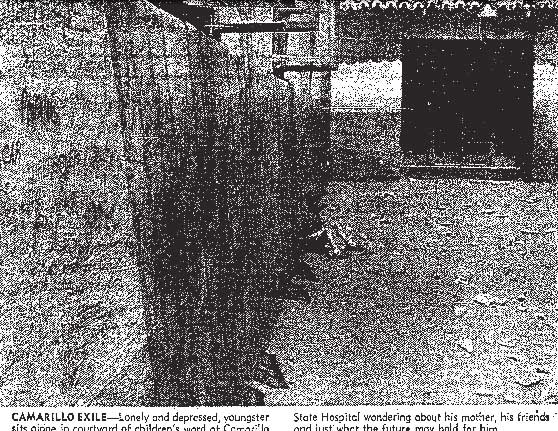
From the same 1955 L.A. Times article, the caption on this photo says "Camarillo Exile: Lonely and depressed, youngster sits alone in a courtyard of children's ward at Camarillo State Hospital wondering about his mother, his friends, and just what the future may hold for him."
The 1955 L.A. Times article referenced above goes on to say that in the summer of 1955, there were 80 children under the age of 15 in the hospital: 50 boys and 30 girls. The children were held in separate wards for the girls and boys and these wards were "physically adjacent to adult wards" and only locked doors kept the children separated from the adults. The article notes there is no separation between the children held for 90 day observations and those committed as definitely psychotic. The boys ward was an old adults' ward, with 2 dormitories, a dayroom and a courtyard. The author of the article noted it did not look like a children's area. The staff for the children's units in 1955 consisted of 3 psychiatrists, 2 full time and 1 part time social workers, 1 psychologist and 3 teachers. The children attended school on their wards 20 minutes to 3 hours a day, with little emphasis on formal classroom learning and more emphasis on arts and crafts.
The assistant superintendent of the hospital in 1955, Dr. Nash, said the Children's Unit was established in 1939 to treat and care for "the young schizophrenic, the protest-reaction child, and the prepsychotic in an attempt to prevent them from becoming full-grown psychotics." He said in 1943 the Juvenile Observation Act was passed which allowed the Juvenile Court to commit juveniles to Camarillo for 90 day observation periods. The article says that the typical 90 day case was assigned to one psychiatrist and the social workers for the ward would contact the patients' parents to get them into weekly "parental therapy sessions." Psychological tests were used to determine which treatments to use and Nash said they would often hold patients for an additional 90 day stay if the child was found "most disturbed" and no treatment centers were located near the family home. This article says that the bulk of child admissions into Camarillo came from Juvenile Courts, CA Youth Authority, private physicians, schools and child-guidance centers. At the time of the 1955 article, 23 children were on a waiting list to be admitted to Camarillo for observation.
The 1955 article says that a new 170 bed children's unit was being built, so that the nonsegregation of children from adults can be resolved. The new children's unit was to be open to children up to age 17 and would hold those committed for 90 day observations, mixed with those commited as mentally ill and the "voluntarily commited." The article says "if the children are too aggressive or too psychotic, they will be placed in the old wards. Also those children in Camarillo now as court or voluntary commitments will not be transferred into the new units unless the hospital authorities feel they could fit into the way of life in the new facility." Additionally, if children were too aggressive, they would be sent back to the referring agency if they did not have room for them in adult wards. Dr. Garrett, superintendent of the hospital at the time said they expected the new children's unit to fill up within 2 months after it opened.
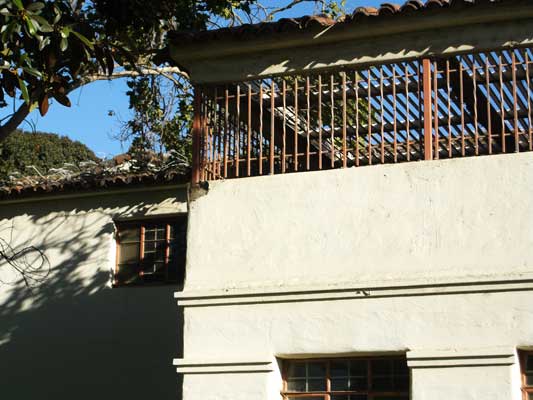
This building is on the north end of the North Quad. It has a fenced-in patio and in the floors below are many wall murals as if for children and there is old playground equipment on the eastern lawn of this building. (Photo: K. Anderberg Aug. 7, 2010)
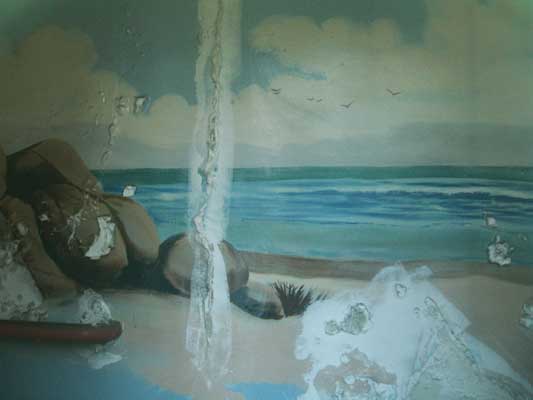
This ocean mural is visible through the windows below the caged patio above.(Photo: K. Anderberg Aug. 7, 2010)
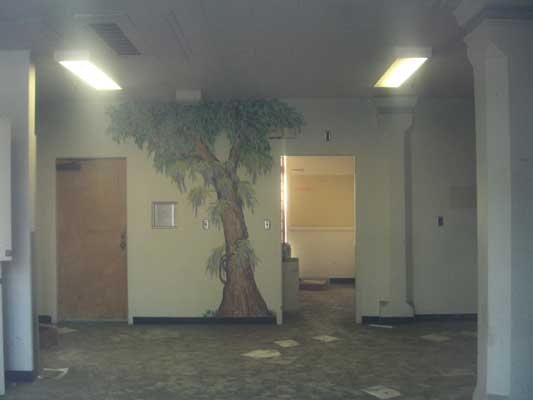
This tree mural is visible through the windows of the fenced patio above also. (Photo: K. Anderberg Aug. 7, 2010)
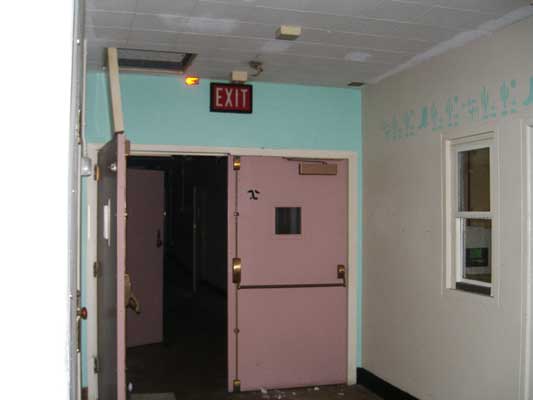
This is one of the halls in an area with a children's mural on the outside wall and 4 square paint on the playground outside. (Photo: K. Anderberg Aug. 7, 2010)
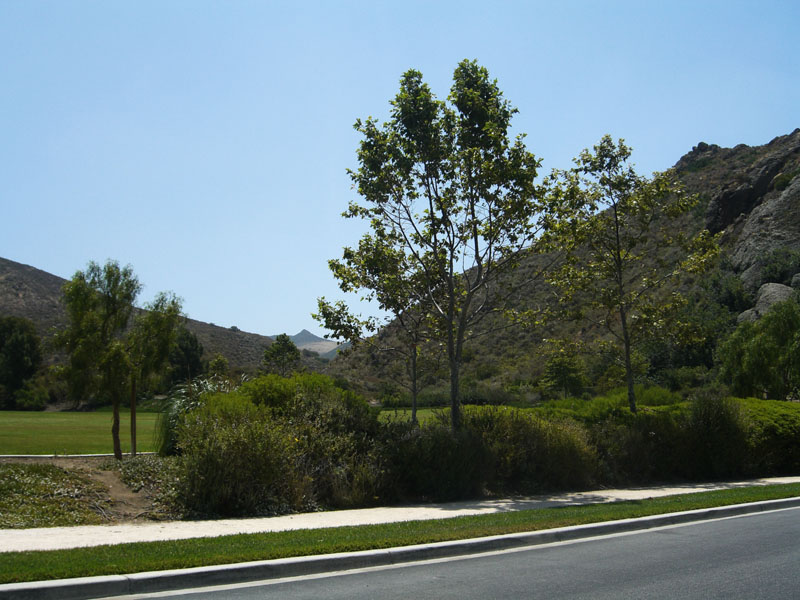
This is the location of the old Children's Unit. It is now a park. (Photo: K. Anderberg June 13, 2010)

The rocks on the hills between the old Children's Unit and the main hospital are like lava and they look like frightening faces. (Photo: K. Anderberg June 13, 2010)
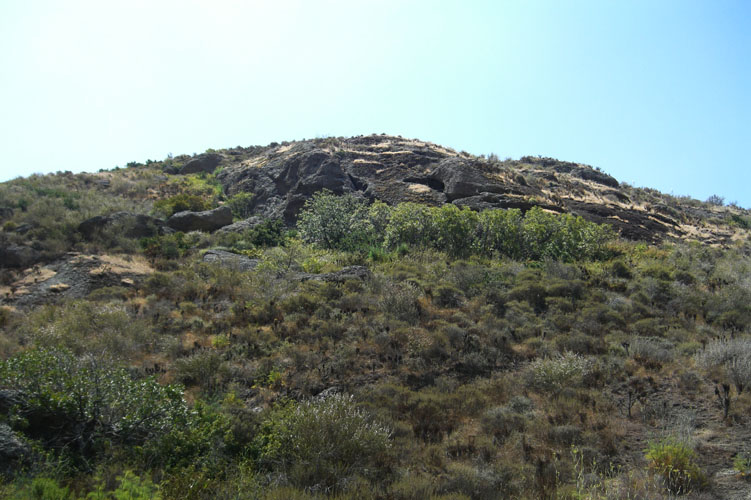
More of the rocks on the hills between the old Children's Unit and the main hospital that look like frightening faces. (Photo: K. Anderberg June 13, 2010)
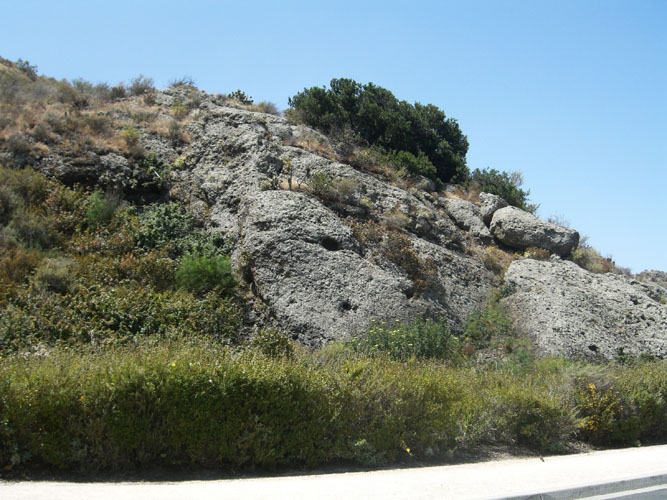
More of the rocks on the hills between the old Children's Unit and the main hospital that look like frightening faces. The rocks in this area are very interesting. The ones down by the dairy look dimpled. This whole area appears to have had strange geologic episodes in its past. (Photo: K. Anderberg June 13, 2010)